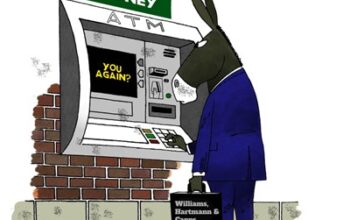As Goldwater said, “any government big enough to give you everything they want is big enough to take it away.” In San Fran government gave people who wanted to use e0biles, the right to ride them. But, now they are using “regulations”, to make sure you can’t.
“There’s no real difference between the chargers for an electric bike and a MacBook Pro. But a new San Francisco law treats one as a dire threat to public safety and the other as a harmless feature of everyday life. Some of the city’s e-bike retailers now say that distinction could put them out of business.
Responding to an increased number of fires spawned by improperly charged e-bike batteries, the Board of Supervisors in February unanimously amended the city’s fire code to regulate which e-bikes can be sold and how their lithium-ion batteries are to be handled. Among other things, the law sets a minimum distance between charging stations in stores and—perhaps most cost-prohibitively—mandates the installation of sprinkler systems in shops that charge five or more bikes. The fire marshal will work with owners to ensure compliance.
Will they outlaw any building that has more than five E-books? Of course not. Just anyone way to chase people and jobs out of the dead San Fran.
SF wrote new regulations for e-bike batteries. Bike shops fear they could lose everything
By Astrid Kane, SF Standard, 3/11/24 https://sfstandard.com/2024/03/10/san-francisco-ebike-safety-legislation/
There’s no real difference between the chargers for an electric bike and a MacBook Pro. But a new San Francisco law treats one as a dire threat to public safety and the other as a harmless feature of everyday life. Some of the city’s e-bike retailers now say that distinction could put them out of business.
Responding to an increased number of fires spawned by improperly charged e-bike batteries, the Board of Supervisors in February unanimously amended the city’s fire code to regulate which e-bikes can be sold and how their lithium-ion batteries are to be handled. Among other things, the law sets a minimum distance between charging stations in stores and—perhaps most cost-prohibitively—mandates the installation of sprinkler systems in shops that charge five or more bikes. The fire marshal will work with owners to ensure compliance.
“That basically means you’re putting any bike store without [sprinklers] out of business,” said Eugene Dickey, the owner of Third Rail EBikes in the Mission District. “We’re an older building. I don’t even have plumbing here, so we’re talking on the order of $50,000 to $60,000 to get sprinklers.”
The pandemic was a boom time for e-bike retailers, as the battery-powered devices became a popular alternative for getting around San Francisco without a car or just getting some exercise. But as gyms reopened and the threat of Covid began to recede, bike manufacturers and retailers had to grapple with another challenge: exploding battery cells, which generate toxic fumes and scary headlines.
The San Francisco Fire Department now responds to an average of 30 exploding battery fires a year—some quite severe, like a November 2020 incident at a residential mid-rise that injured five people and displaced 15.
Brett Thurber, the founder of Bernal Heights e-bike shop The New Wheel, agreed that safety concerns for cheaply made e-bike batteries are real. But in spite of a few headline-grabbing incidents, he said, the increase in fires is nowhere near the exponential growth in e-bike use. Cheap, imported bikes that can be purchased online often don’t meet safety standards. This is where most fires tend to come from, Thurber believes, which is but one reason that The New Wheel doesn’t stock them.
Thurber believes the city is overreacting with its new legislation. In New York, tens of thousands of food-delivery drivers—often immigrants living in substandard housing conditions—have daisy-chained power strips together, sometimes charging dozens of cheap e-bikes at once and sparking serious fires. That has not been the case in San Francisco, he said.
“It’s not that these bikes aren’t tested,” Thurber said of his stock of Benno Boosts and Tern HSDs, which can cost upward of $4,200, far more than the $500 e-bikes found on Amazon or Alibaba. The law allows for a six-month grace period, for retailers like The New Wheel to comply, “but they’re saying a lot of quality e-bikes are no longer allowed to be charged in San Francisco apartments.”
At Scenic Routes Community Bike Shop in the Richmond District, the shop policy is not to leave anything charging overnight or without an employee present. But co-owner Jay Beaman called the law’s safety concerns misplaced in comparison to the hazards on San Francisco streets.
Instead of worrying about the minimal number of fires caused by e-bike batteries, regulators should be “talking about traffic deaths,” Beaman said. “More pedestrians and cyclists are getting killed than ever before.”
Supervisor Aaron Peskin, who wrote the battery-charging legislation, insisted the city is not looking to put bike shops out of business—let alone go house to house in search of illegal bicycles. In drafting the bill, he worked with a group of e-bike retailers as well as Lyft, which operates the electric Bay Wheels bike-share fleet.
“We tried to do every compromise that the fire marshal didn’t think was compromising public safety,” he said. “But there were certain points at which the fire marshal said, ‘Hey, if you do these things, you might as well not bother.’”
One such compromise deals with safety certification. The e-bike industry has evolved quickly, but some quality e-bikes may not yet have what’s known as EN or UL certification, referring to European Standards and Underwriters Laboratories. So Peskin rewrote the bill to allow the San Francisco Fire Department the ability to make its own determination that specific e-bikes are safe.
Kash of Warm Planet Bikes, one of the bike shop owners who worked with Peskin and who uses only the one name, applauded the supervisor for taking certification standards into account. But, he noted, the legislation doesn’t address another safety issue, one even more keenly felt by electric bike owners: theft.
“If you stand down on Market Street, you will see someone on a stolen e-bike with a battery stolen from another e-bike duct-taped to the frame—and you know this guy is charging it with a charger that is not rated for whatever they are doing,” Kash said.
San Francisco fire marshal Ken Cofflin noted that the legislation doesn’t actually single out e-bikes. It also covers e-scooters and hoverboards—essentially, all electric mobility devices apart from wheelchairs. Further, he believes the change was necessary because of the uncontrolled way that damaged lithium-ion batteries typically burn, a chain reaction known by the somewhat Chernobyl-esque term “thermal runaway.”
“Lithium-ion batteries don’t burn out. Water doesn’t extinguish it,” Cofflin said. “You have to keep cooling it. In a high-rise, you can’t drag it outside.”
In a sense, it’s the very success of lithium-ion batteries that has escalated these concerns. Since their introduction in the early 1990s, they’ve become cheaper and more powerful, key elements in the transition from the internal combustion engines. Powerful batteries can translate to more intense fires—an uncomfortable tradeoff for consumers and lawmakers committed to encouraging climate-safe modes of transportation.
“We understand the city wants more bicycles to lessen the carbon output,” Cofflin said. “We’re not trying to stop that. We’d just like to get down to zero fires.”



